Even at first glance, the audience knows this film will be different. Godzilla shows up right away, two and a half minutes into the film, and he's glowing and smoking. There's a mass of glowing, pulsing red tissue on Godzilla's chest, and his spines now glow all the time. Something has changed, Godzilla looks more threatening than ever.
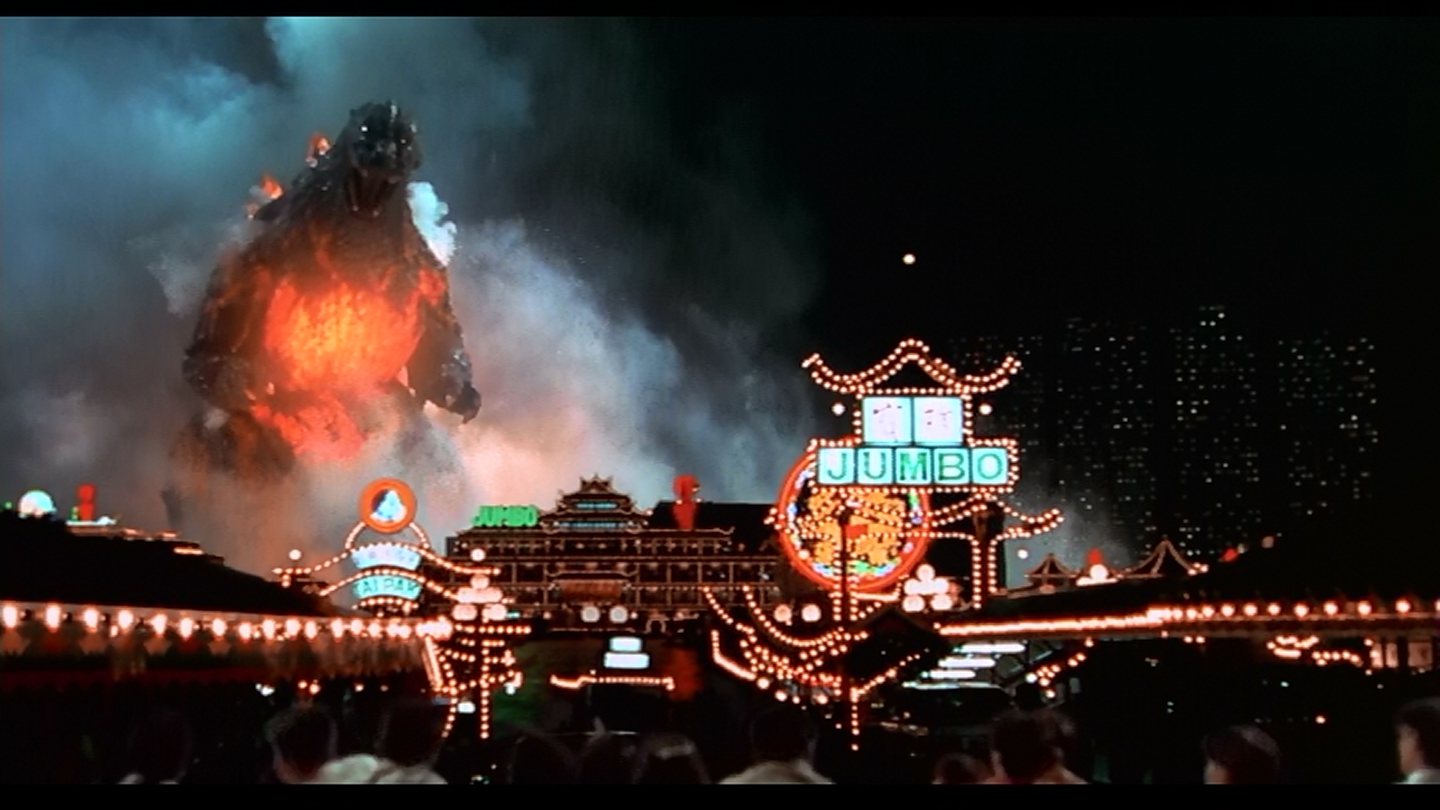
Godzilla's heat ray has not changed permanently to the more powerful red spiral, as acquired when resurrected by Rodan in Godzilla vs Mechagodzilla II. Godzilla used the red ray at the climax of the fight against Space Godzilla. In the latter film, it appeared to be an ability to be used at will. Now it seems to be the default.
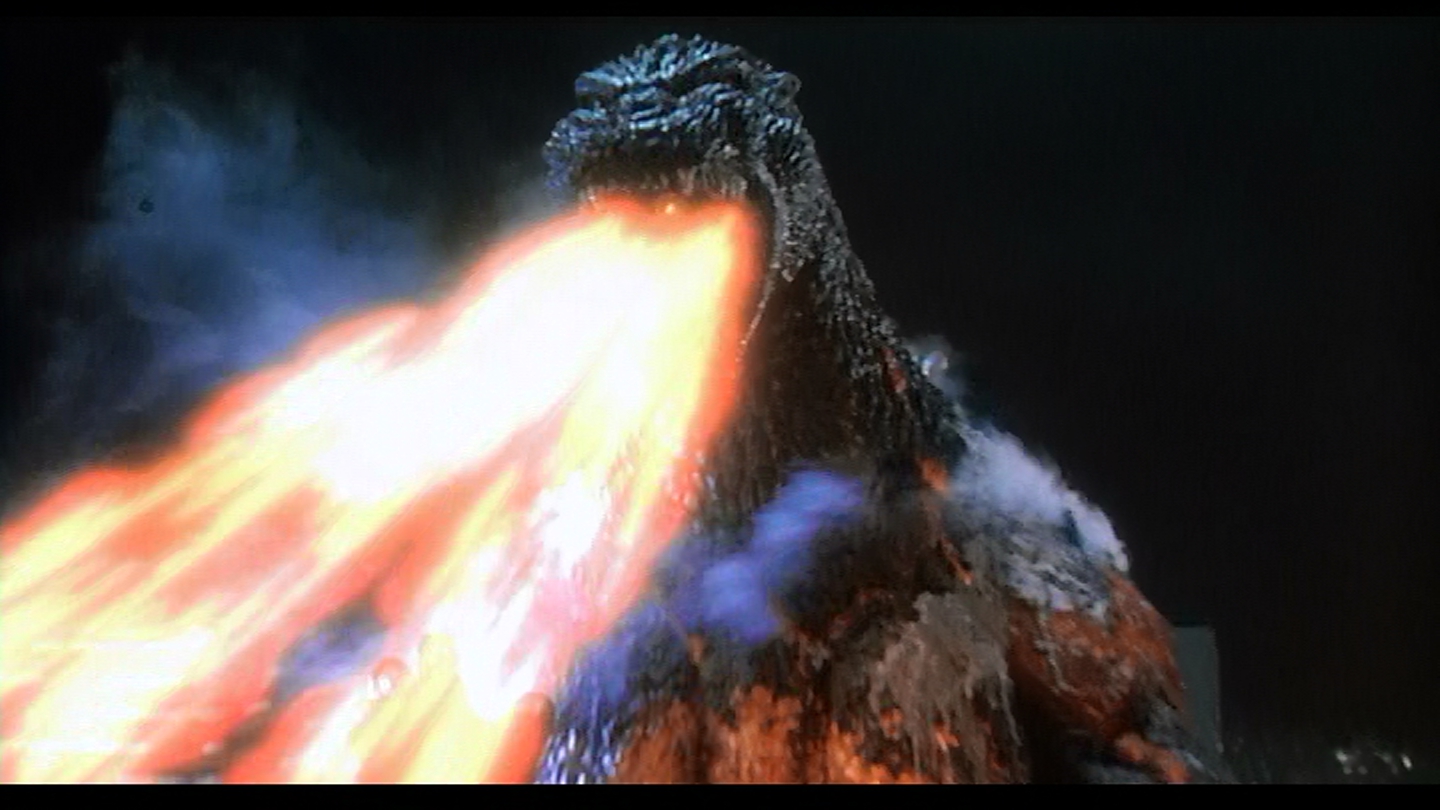
Our protagonists, Yukari Yamane and Kenichi Yamane are the children of Dr. Yamane's adopted son, tying us firmly to the original Godzilla in a way that no film has done previously, through the human characters. We finally get to learn about the aftermath of the film, from the human perspective, and it wasn't a happy ending. Emiko never did marry the handsome Ogata. She has become the Yamane childrens' aunt, too traumatized to marry, and still wakes up from terrible dreams of Serizawa's suicide.
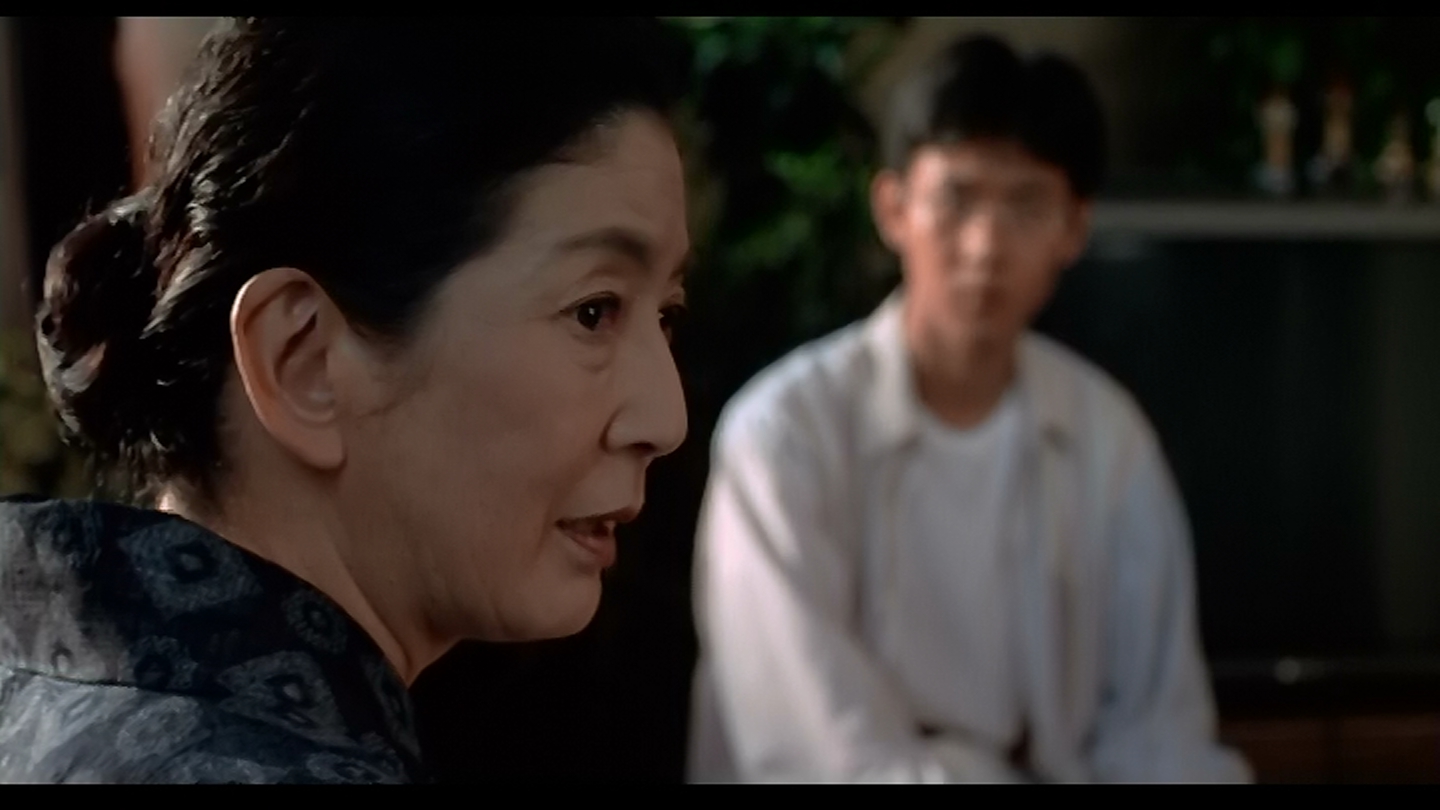
It's been some time since Godzilla stomped on a city that wasn't Japanese (probably Destroy All Monsters). This foreshadows Godzilla's identity as a potential global disaster, not just something Japan has to deal with, since the licence for the character was about to be shipped overseas. This is the first film in the Heisei series, and possibly since the first Godzilla vs Mothra, that looks at Godzilla's identity as nuclear metaphor. Sure, Godzilla has eaten nuclear reactors, but the link to the bombings in Hiroshima and Nagasaki: this film was released in the fiftieth anniversary of the bombings. This gives the film, for me, a more serious tone, and a sense of tragedy, at least when the dubbing doesn't get in the way. Godzilla's roar over the title credits is from the original film, a more raw sound than the audience is used to in the Heisei series.
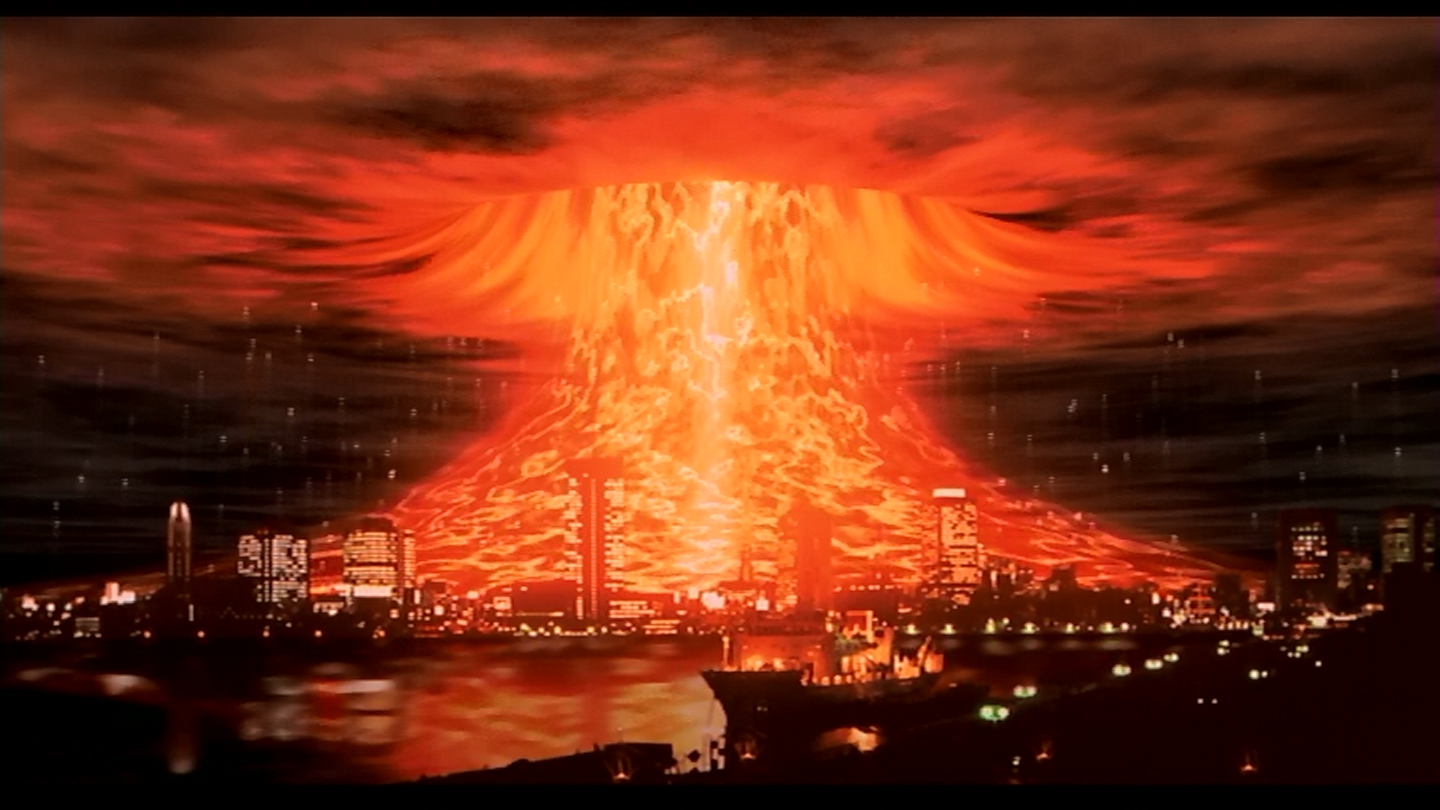
Like Hedorah, Destoroyah has multiple forms. It begins as a swarm of car-sized critters. They have a flared head and a long neck, on top of a eight-legged crab-like body. The color scheme, charcoal with red highlights, is very reiminscent of Battra. Part of what gives it extra menace is that we don't know its powers. At the end of the initial confrontation, one of the creatures is hit bvy the flamethrower, and it just burns. It doesn't scream or thrash, but bits of burining material drip off it, and the audience is shown the flames touching the ground. What does the thing know something we don't? This sort of unanswered question is quite rare in kaiju film.
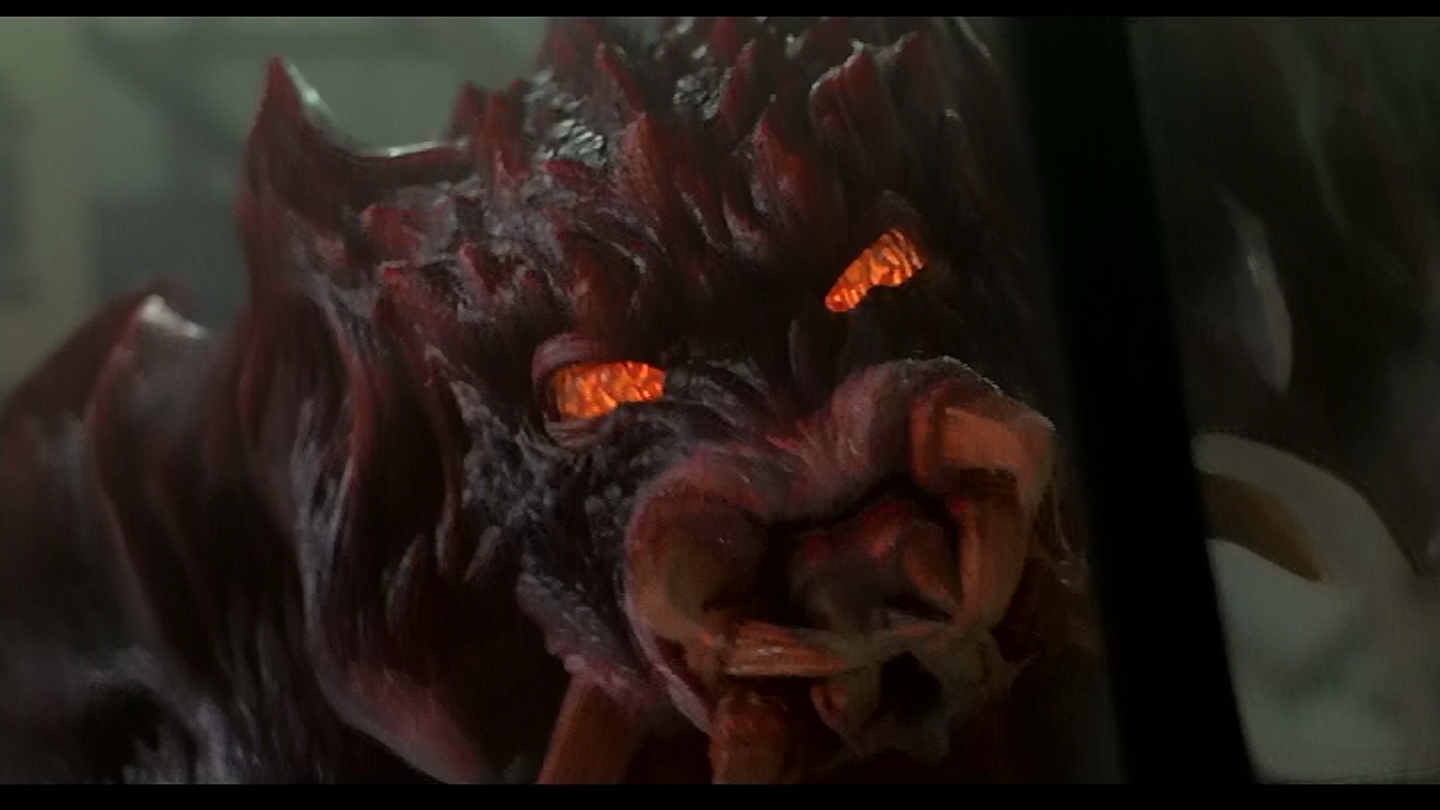
Remember when I said that many of the Heisei films make homage to a Western blockbuster? This time it's James Cameron's Aliens. When the military goes in to investigate the initial outbreak of multiple car-sized Destoroyahs, the aurience is shown a tankless flamethrower that is supported by a boar belt, like Aliens' smart guns. That also have the motion detector. Later, the mini Destoroyahs deploy that second set of inner jaws that made the Aliens so menacing.
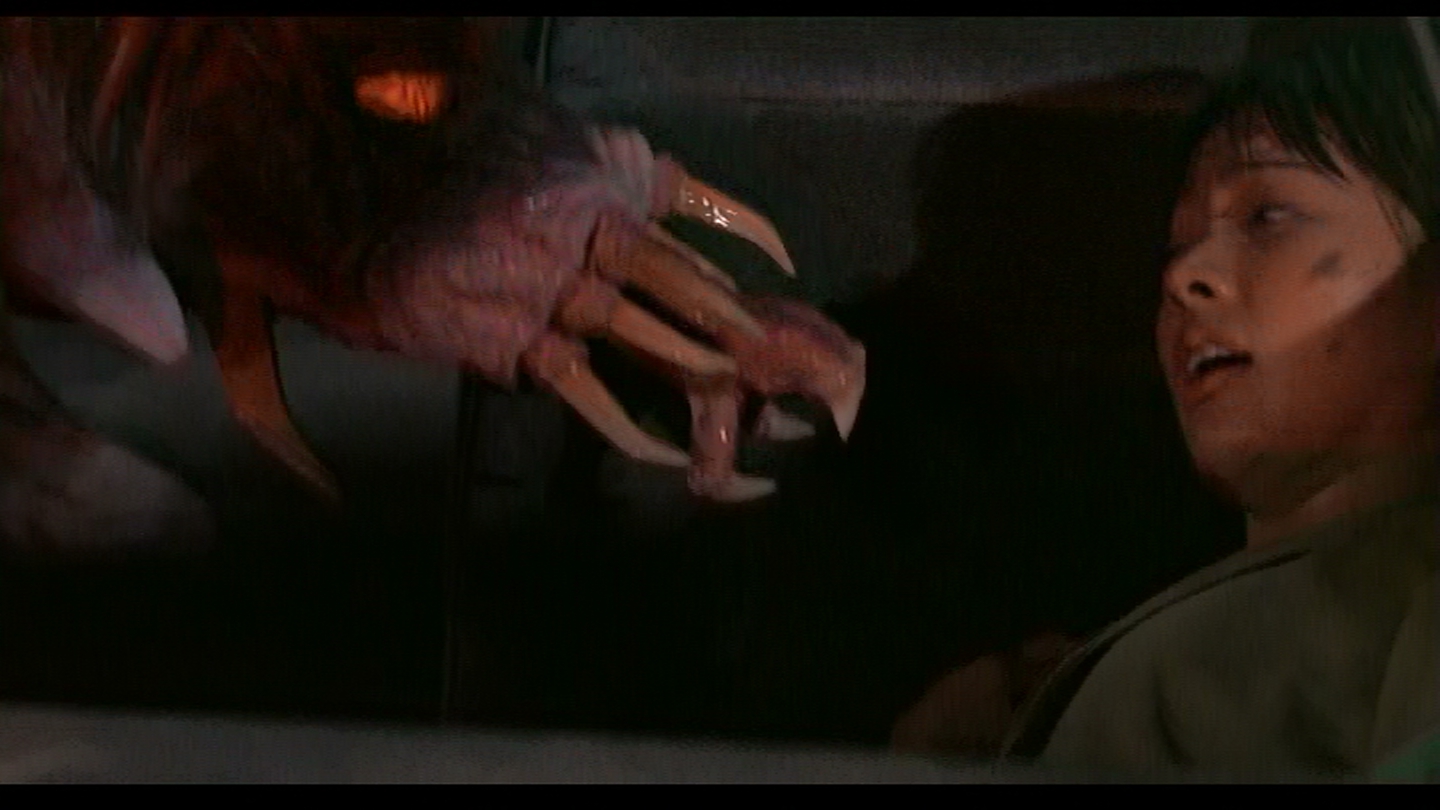
Second-stage Destoroyah looks much like the smaller versions, crab-like lower body, long neck, and a massive, shielded head on top. But it's the size of a building. Its legs are longer, and there appear to be some upper limbs. They mostly just wave around, however.
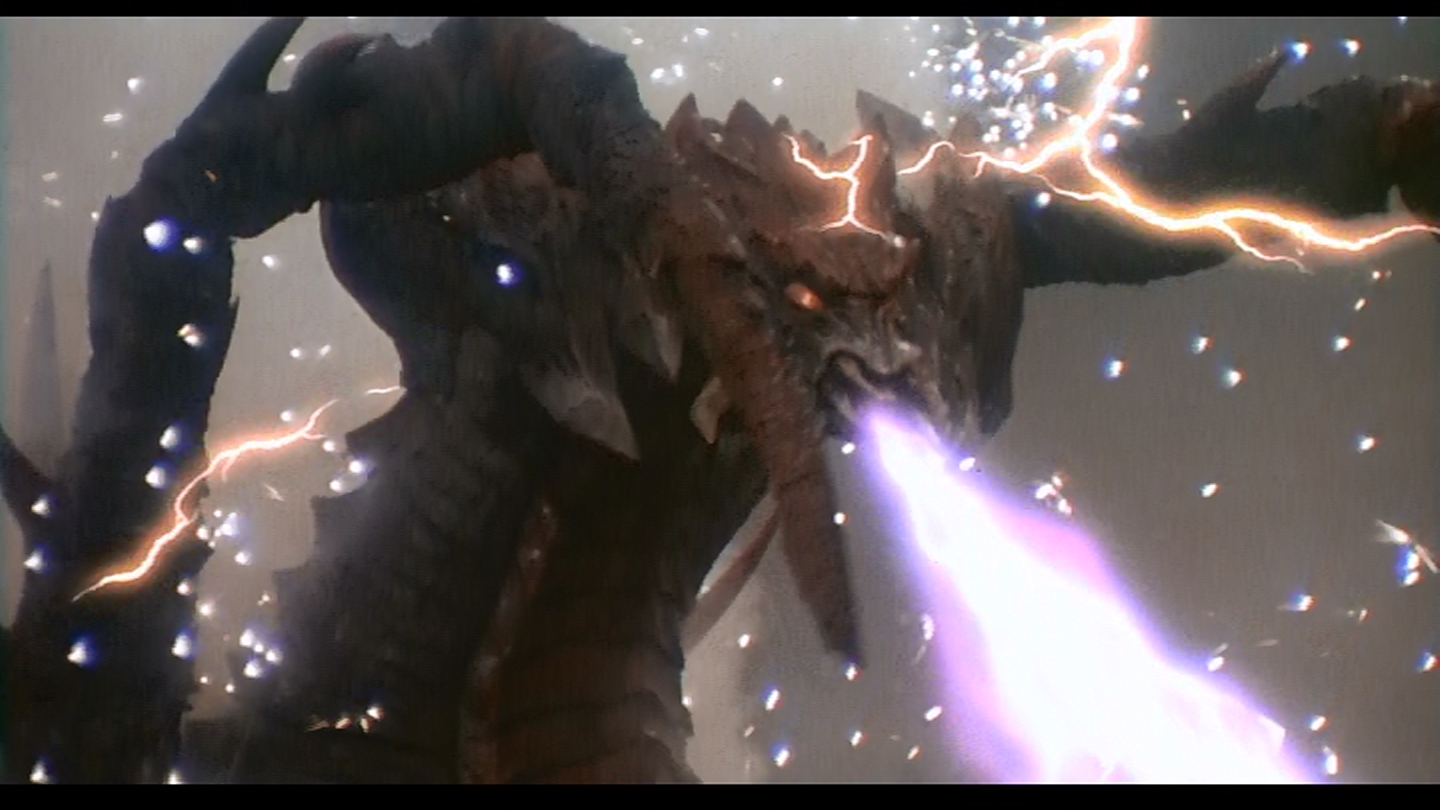
Third-stage Destoroyah has wings, again reminiscent of Herodah's recapitulation of phylogeny. It doesn't use this form to fight, but to move from one location to another.
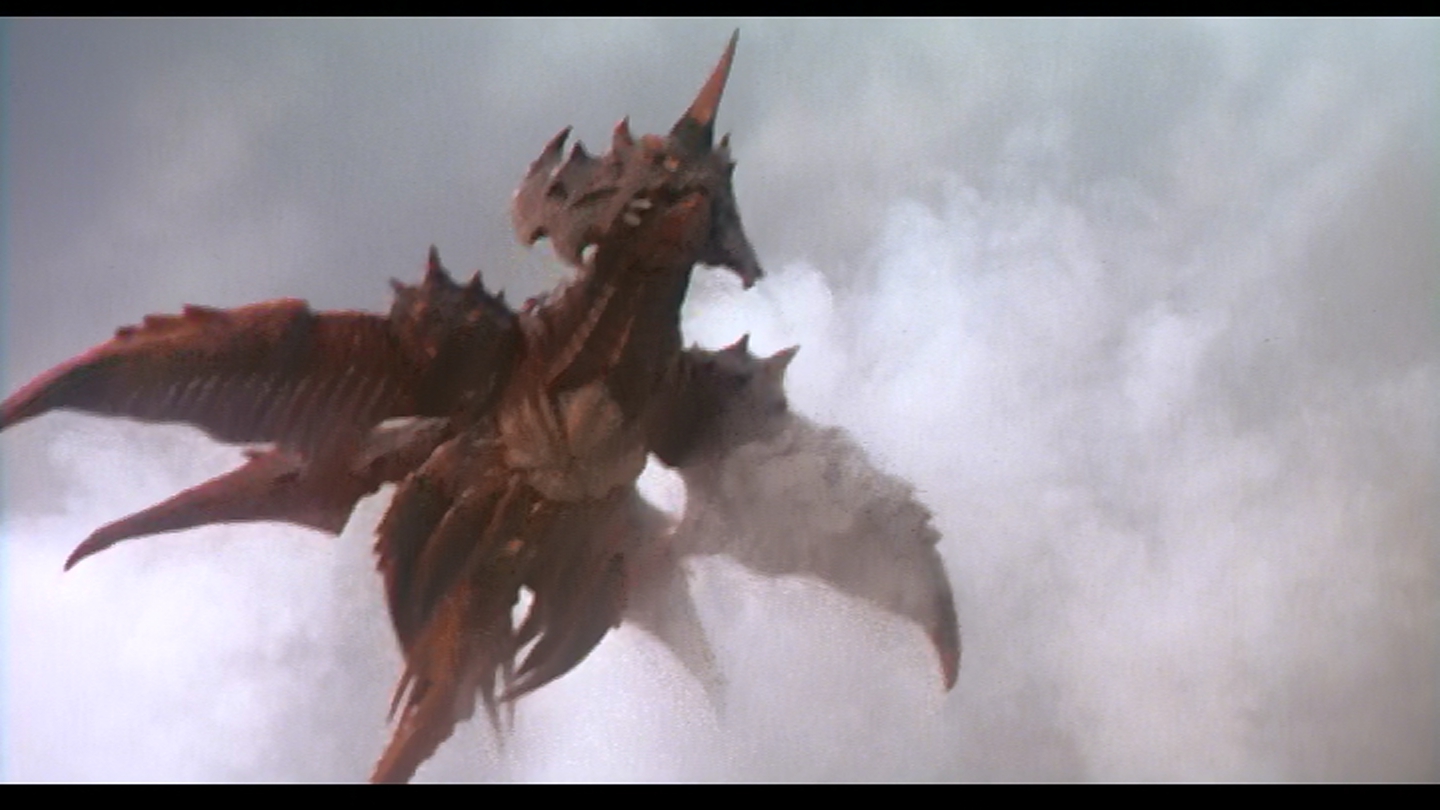
Fourth-stare Destoroyah is a massive, perfect match for overpowered Godzilla. Finally walking erect, and also with wings, it looks the most demonic of all Godzilla's foes.
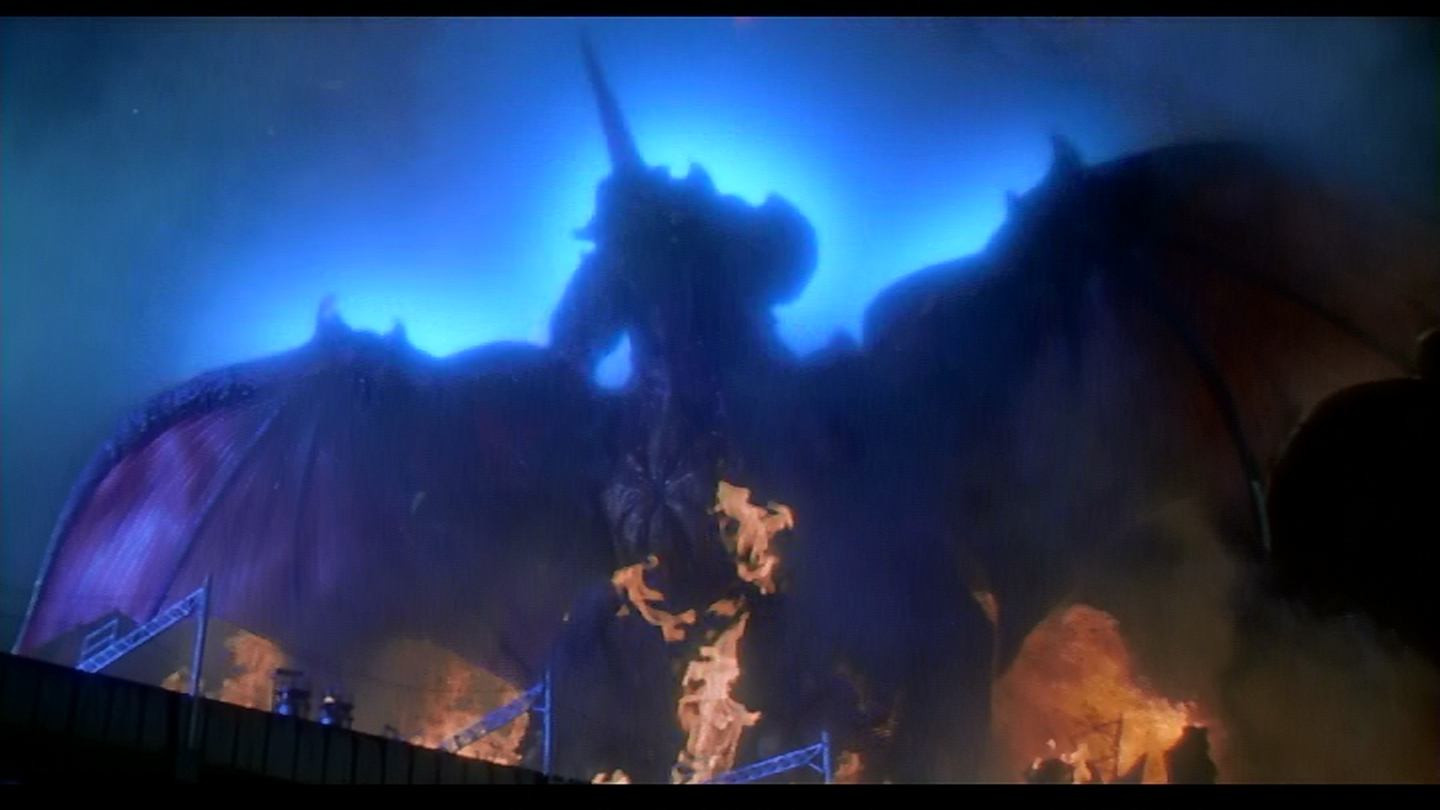
The Super X III doesn't look like the previous iterations. it has wings, for one. The design seems to have been influenced by the F-1217 Nighthawk, as it's black and blocky, with a pair of tail fins. It is once again equipped with cadmium missiles, which we haven't seen since The Return of Godzilla. All the weapons on the Super X III are low-temperature, so they will help cool Godzilla down. Despite this, the victory is Phyrric. Even the Super X III can't keep Godzilla on ice forever.
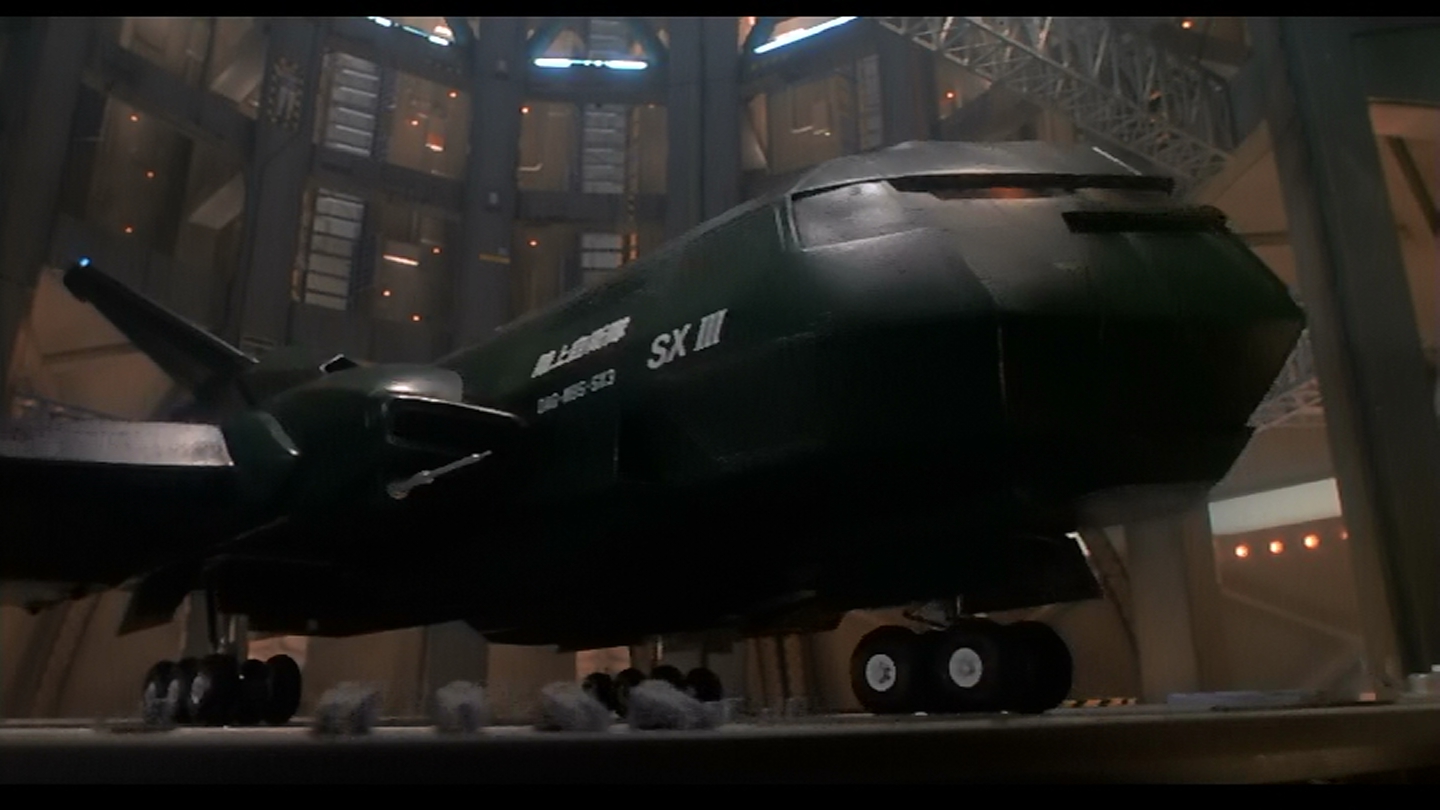
The next piece of the plot is Godzilla Junior. It has lost the cuteness it had of Godzilla vs Space Godzilla, and it's not missed. Junior appears to be more adolescent, looking angular, like a smaller, slimmer version of Godzilla senior. Junior is also green, which ins interesting, since Godzilla is often presented in American promotional material as green, but has always been a charcoal grey. Initially, Junior's role is to lead Godzilla to Destoroyah, but it serves several ends. Junior being on the receiving end of a curbstomp battle gives the audience a sympathetic note not usually found in Godzilla films as Godzilla mourns its offspring.
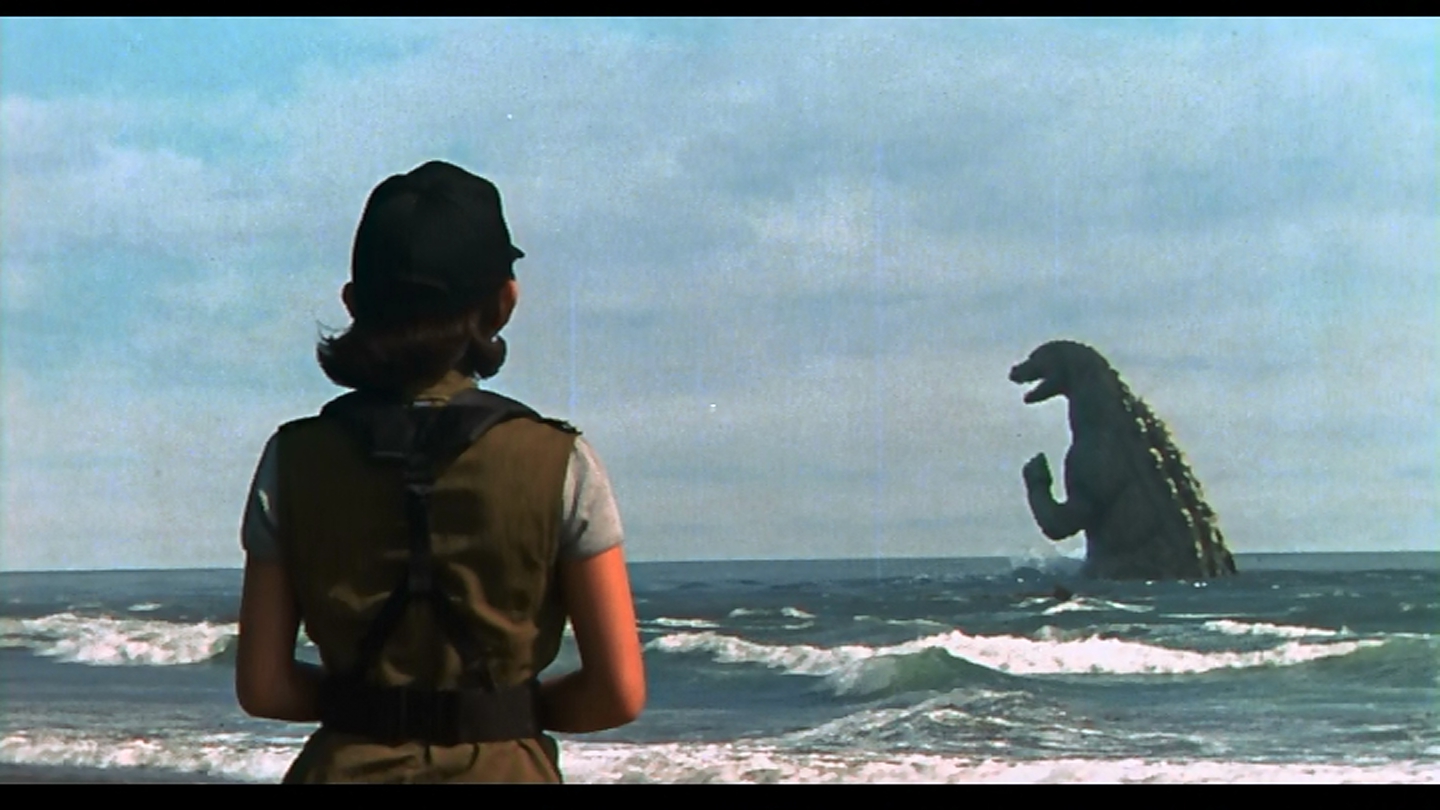
In the climactic fight, Junior is gravely inuured, and the movie makes this touching. Between the Afukube music, and reaction of Miki Sagusa, who has come to sympathize with Godzilla and family, the scene has an emotional impact unlike most other kaiju films. It's reinforced when Godzilla itself comes to look at its fallen offspring. When Junior closes its eyes, Godzilla thrashes around in inchoate rage, and I feel its loss. For orchestrating this genuinely touching moment with a creature that has been primarily an engine of destruction, this film stands out among the Toho ouvre.
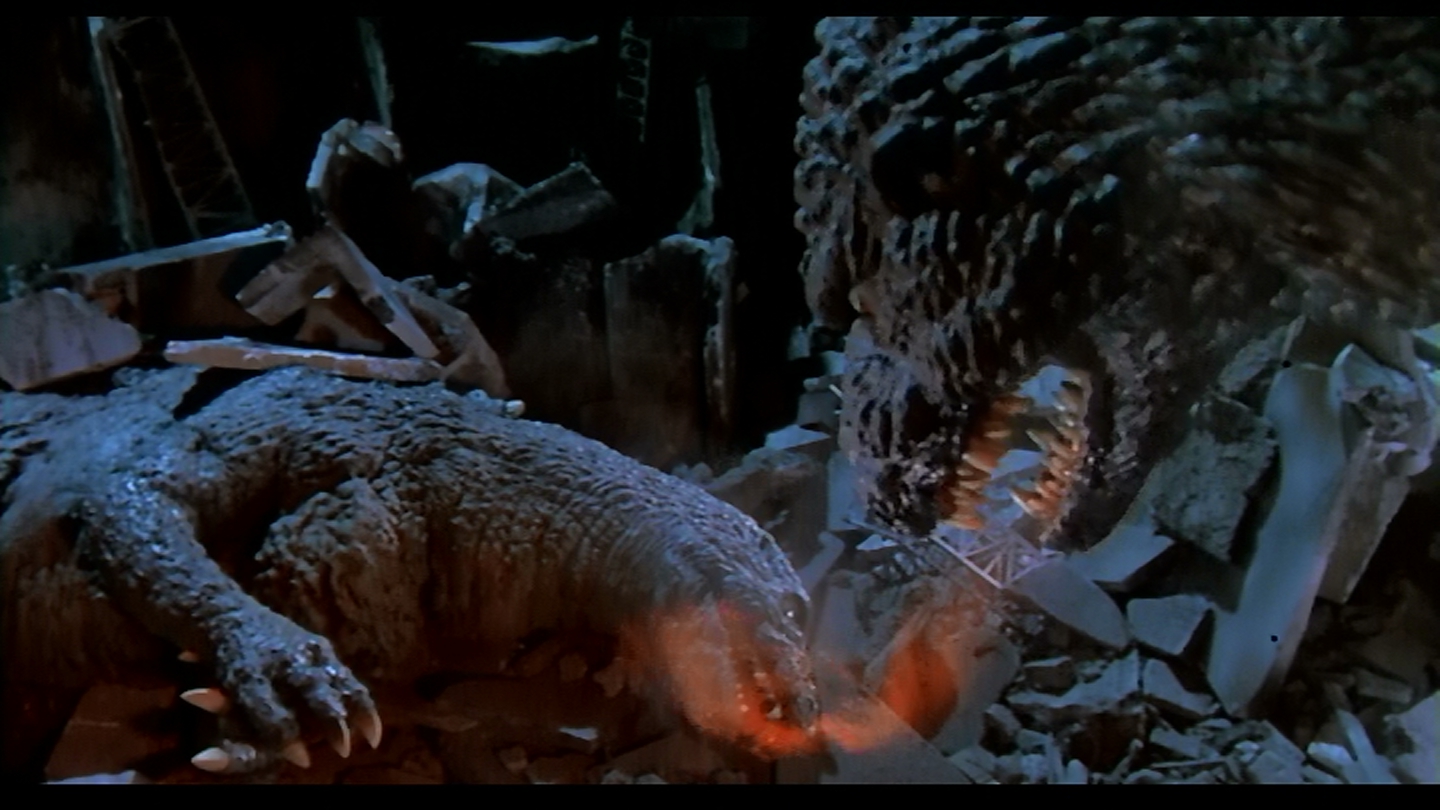
Godzilla's temperature continues to rise, and the special effects crew has done an excellent job of showing us how much this is a problem. Godzilla's spines begin to melt. It begins throwing off waves of light from its back.
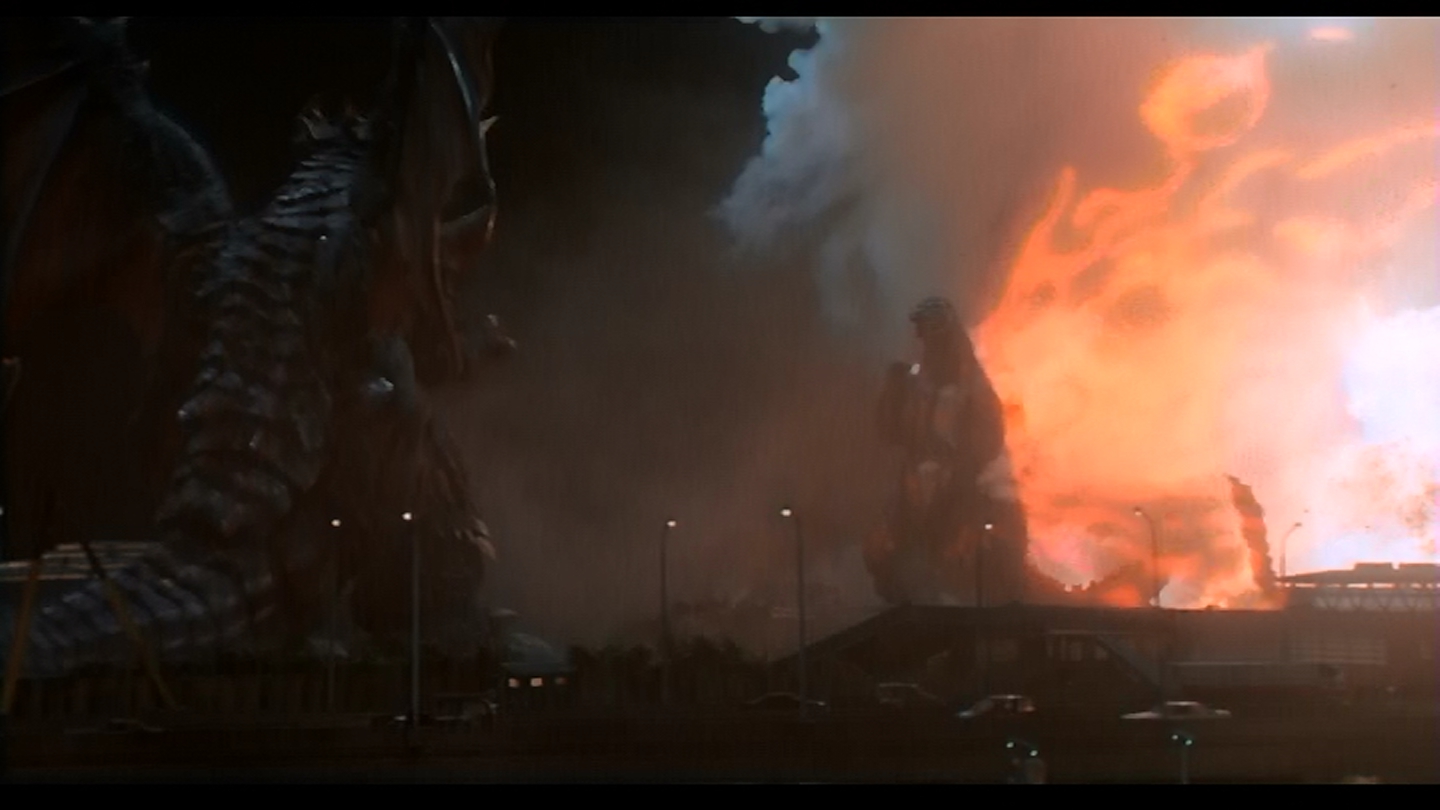
Destoroyah is rather summarily dispatched, leaving us with the final problem of Godzilla's impending meltdown. Again, the effects crew, combined with Ifukube's music, convey the tragedy that is unfolding. The sounds of the missiles and lasers are muted, and we are left with the beautiful and sad music as Godzilla's flesh begins to melt off its bones. Godzilla's death theme is a combination of the original "Prayer for Peace" from the original film, as well as a light rework of the Godzilla march, and it's beautiful. The scene is not a triumph for humanity, but the sad passing of a creature the audience has admired, like a great warrior.

This sadness is mitigated by the re-emergence of Godzilla Junior, not a full adult, absorbing the old Godzilla's radiation and preventing Tokyo from becoming a permanent ghost city. After all, what is Godzilla without Tokyo to destroy?
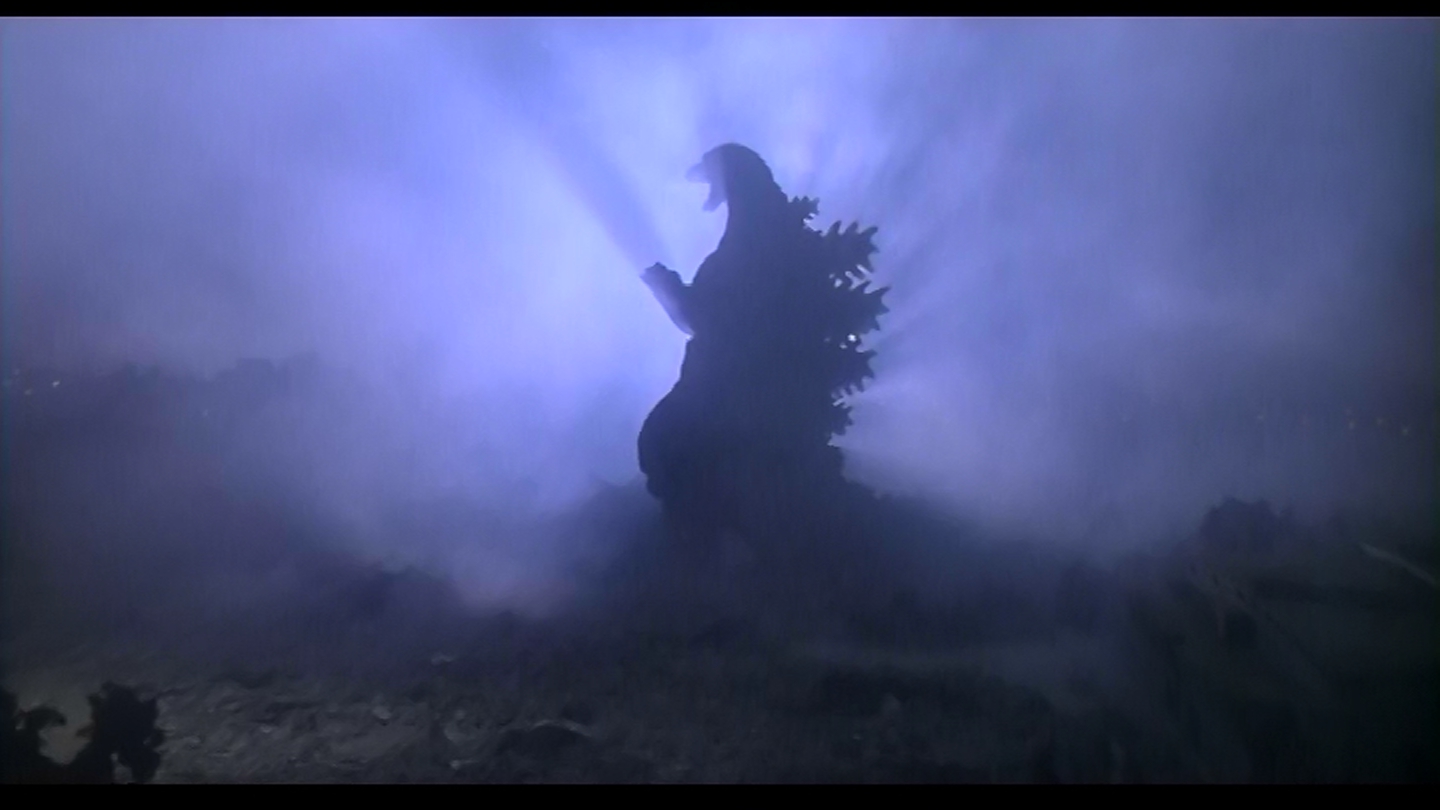
Godzilla vs Destoroyah is a favorite of mine, because of the careful handling of the near-death of Godzilla Junior. The editing in the final fight is very much off, Destoroyah drops from the sky and dies with little acknowledgment. And ultuiamtely, monster fights are passable, but the first time since Godzilla Strikes Again, the monster fight isn't the point. Getting emotionally involved with Godzilla and Junior is. It's not a particularly well put-together film, and I know that part of that is the dubbing, which occasionally strays very far from the original script. Looking forward, again, to the subtitled Blu-Ray. But the impac of the film rests in the last half an hour, and I'm willing to forgive a multitude of sins for that.
Next up, a miracle. Someone takes Gamera seriously.
No comments:
Post a Comment